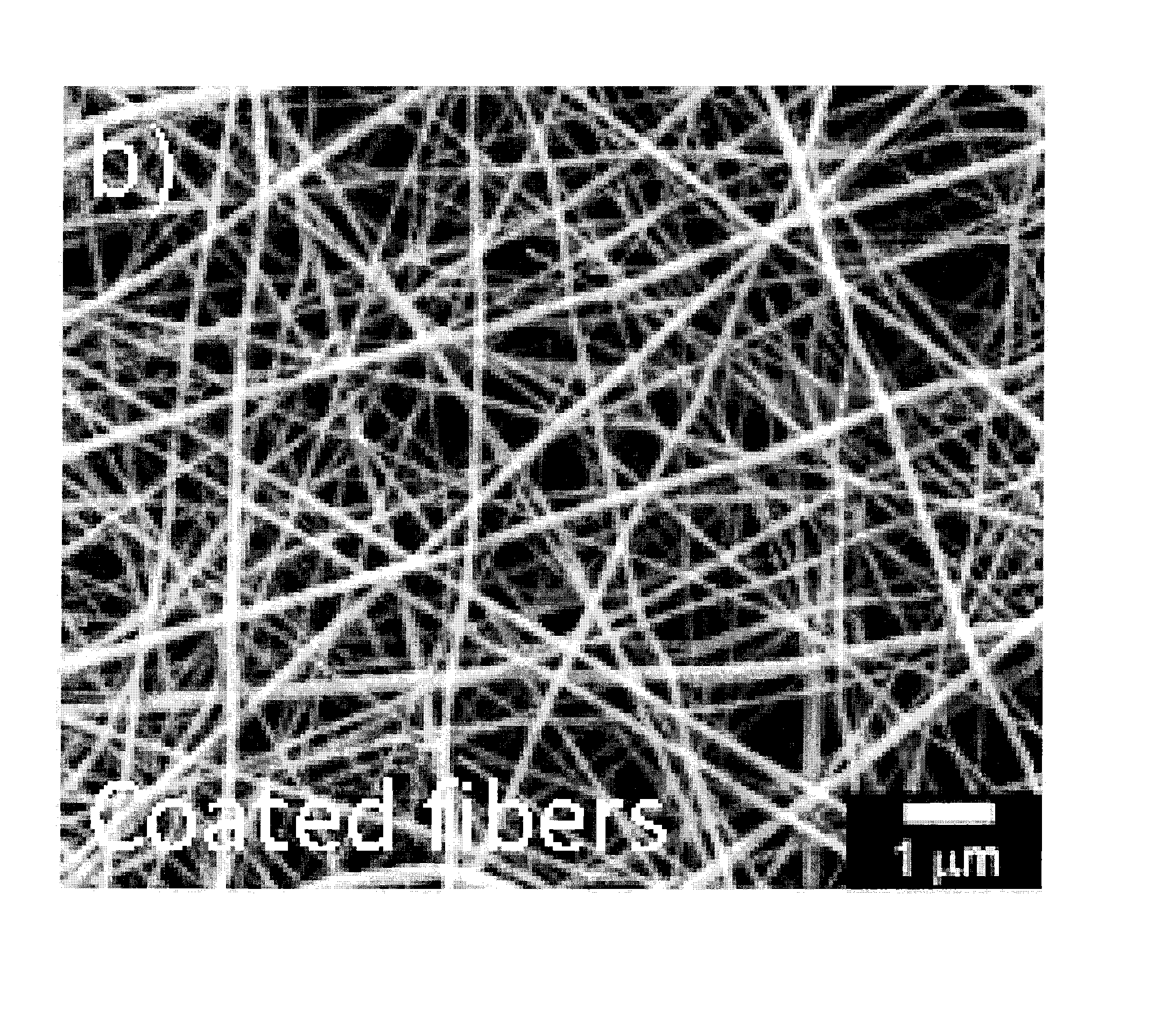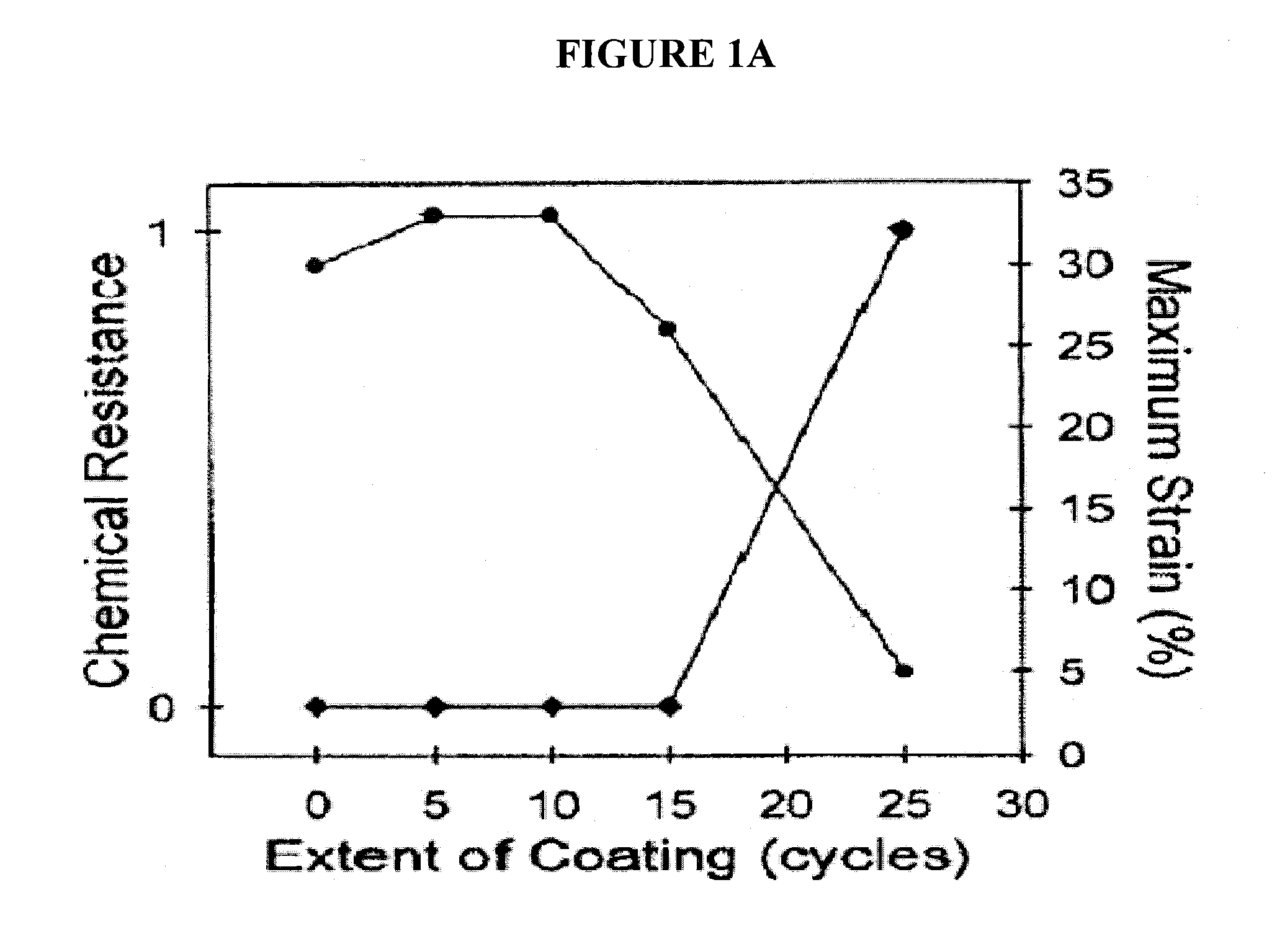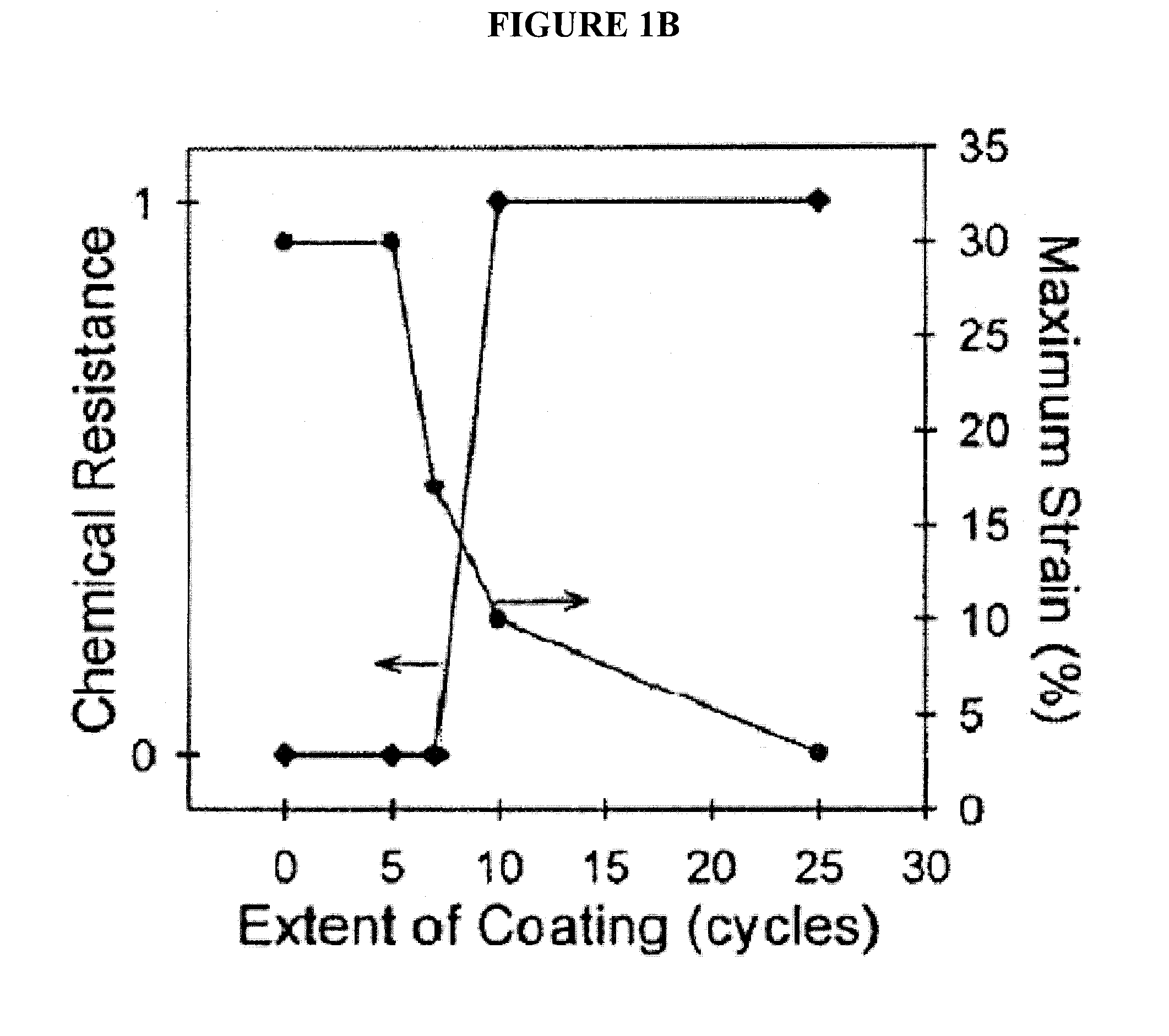Nanostructured polymer-inorganic fiber media
a technology of organic fibers and nanostructures, applied in the direction of filtration separation, separation processes, instruments, etc., can solve the problems of inability to completely and uniformly cover the surface of textile materials, require subsequent expensive drying or curing steps, and the conformality is typically less than ideal, and the effect of reducing the number of steps of drying and curing
- Summary
- Abstract
- Description
- Claims
- Application Information
AI Technical Summary
Benefits of technology
Problems solved by technology
Method used
Image
Examples
Embodiment Construction
[0023]Polymer-based nanofibers hold promise for providing improved air filtration or improved protective barrier properties for a variety of applications. However, small diameter polymer-based fibers are vulnerable to chemical exposure that can degrade their properties. To this end, the present invention provides a barrier layer on the nanofibers which protects polymer-based nanofibers while preserving properties such as morphology and mechanical strength. A few of the nanoscale materials suitable for the barrier layers of this invention nanofiber media include inorganic chemistries of aluminum oxide, zinc oxide, and titanium dioxide and hybrid chemistries of diethylzinc and ethylene glycol, trimethylaluminum and glycidol. A few processes for depositing the nanoscale coatings include atomic layer deposition (ALD), molecular layer deposition (MLD), vapor phase infiltration (VPI), and sequential vapor infiltration (SVI).
[0024]The addition of a barrier layer permits polymer-based nanof...
PUM
| Property | Measurement | Unit |
|---|---|---|
| diameters | aaaaa | aaaaa |
| thickness | aaaaa | aaaaa |
| thickness | aaaaa | aaaaa |
Abstract
Description
Claims
Application Information
 Login to View More
Login to View More - R&D
- Intellectual Property
- Life Sciences
- Materials
- Tech Scout
- Unparalleled Data Quality
- Higher Quality Content
- 60% Fewer Hallucinations
Browse by: Latest US Patents, China's latest patents, Technical Efficacy Thesaurus, Application Domain, Technology Topic, Popular Technical Reports.
© 2025 PatSnap. All rights reserved.Legal|Privacy policy|Modern Slavery Act Transparency Statement|Sitemap|About US| Contact US: help@patsnap.com



